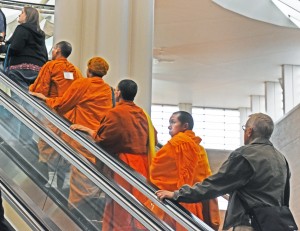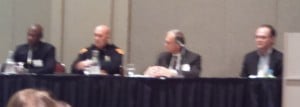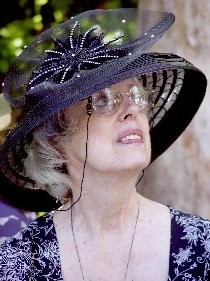It is April now and here in the South that means that spring is all around us. The redbuds and dogwoods are in bloom and the trees in the woods behind my house are covered in a pale green lace of tiny leaves. As the earth has warmed I have been drawn more and more to get my fingers in the dirt. I’ve been cleaning out the detritus of fall leaves, pruning the rose bushes, and planting new flowers and herbs for the coming season. It is a fitting reminder that the promise of life renewed has been kept for another year.
When I think about this renewal of life all around me I also think about what we are all trying to do in our interfaith work. We spend so much time talking and arguing about the differences among the many world religions. But how often do we truly consider the similarities that bind us all together? Perhaps I am over-simplifying things, but it seems to me, after careful consideration, that all religions try to teach two very basic things. The first of these is that one should honor the Divine by whatever name one chooses to hold appropriate. And the second is that one should strive to live rightly with one’s fellow man.
Isn’t the latter just what we are striving to do with our interfaith work? We are trying to find ways to set aside our differences and work together to the betterment of our local communities, our country, and our world. We do this through getting face to face with those of different belief systems, different ethnic backgrounds, different nationalities, etc. In other words we are stretching out our hands to each other so that we no longer see our differences but rather the sameness of our humanity. It’s truly hard not to be caring and compassionate when we put a known face to the “other”.
This week I learned of a program that aims to create a more compassionate world and calls upon those all across the globe to enter an agreement to work towards that end. Dr. Karen Armstrong developed a program called the Charter for Compassion in an effort to “effort to restore not only compassionate thinking but, more importantly, compassionate action to the center of religious, moral and political life. Compassion is the principled determination to put ourselves in the shoes of the other and lies at the heart of all religious and ethical systems.” This speaks strongly to my own belief that this call to treat others as we would wish to be treated is what lies at the heart of all world religions and therefore at the heart of interfaith work.
As a Wiccan, I believe in the immanence of Divinity. I understand that the Divine is present in each aspect of creation, and that the Divine is present in each of us. Therefore I am called to treat others as reflections of the Gods. If we are each a physical manifestation containing a portion of the Divine, then we should treat each other accordingly. Would one approach the Divine in a manner that was disrespectful or unkind? Or would be look at each other, acknowledge that spark of Divinity that we share, and therefore see ourselves as Brothers and Sisters by virtue of this sharing? I would hope that the latter would be the case.
I view our interfaith work as being a bit like my gardening. Those of us engaged in it are clearing away the detritus of hatred and misunderstanding built up by a winter of viewing other as “bad”. We are pruning back our beliefs that we know the “one true religion”; thereby letting the light of understanding reach deeply into our hearts. And we are planting seeds of compassion and understanding to be shared by all of us around the globe. In effect we are creating a bountiful garden of diversity that reflects all that is good and true no matter what religion we call our own. In our garden we are planting the seeds of hope, peace, and understanding that we trust will blossom into a better world for all of us.
Like Dr. Armstrong’s program, growing this interfaith garden will take commitment, passion, faith, and hard work if we are to see the results for which we hope. But the results will lead to a better, kinder, and more compassionate world for all of us.











